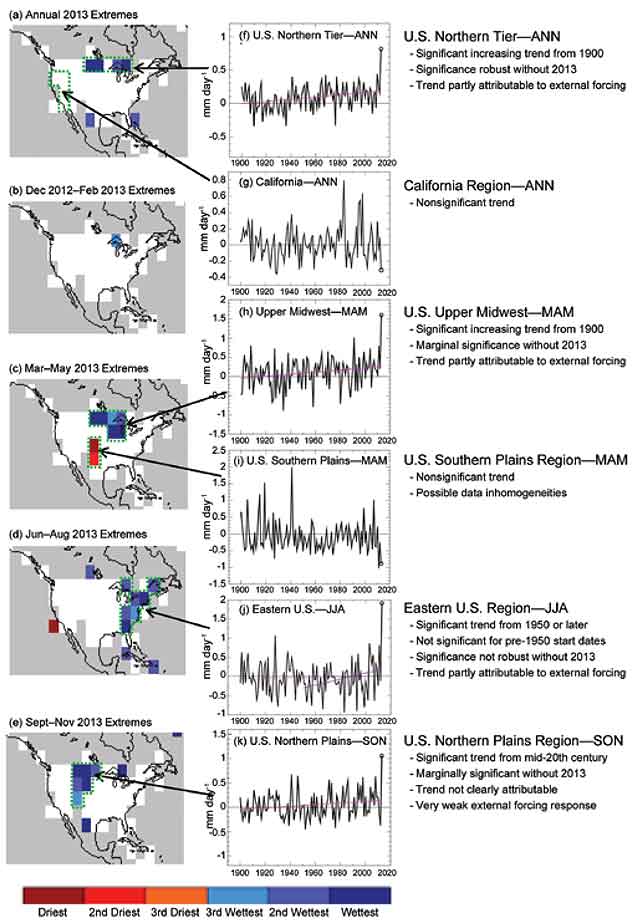September 29th, 2014
Key Findings
- Extreme annual and seasonal mean precipitation occurred over several U.S. regions in 2013.
- For two regions, in the north-central and eastern U.S., these extremes were at least partly attributable to a combination of anthropogenic and natural forcing according to the CMIP5 models.
- Nonetheless the magnitudes of the precipitation extremes in these regions were primarily attributable to internal climate variability.
Thomas R. Knutson, Fanrong Zeng, and Andrew T. Wittenberg. Bulletin of the American Meteorological Society.
Summary
Extreme seasonal/annual precipitation, defined here as ranking first, second, or third highest or lowest in the record of at least 100 years, occurred in several continental U.S. regions during 2013. The authors of this study used CMIP5 models to simulate internal climate variability and the response to historical anthropogenic and natural forcings, for the Northern Tier and the Upper Midwest regions of the U.S. This study suggests that, for these two regions, extreme annual or seasonal positive precipitation anomalies over the U.S. were at least partly attributable to a combination of anthropogenic and natural forcing.
In these two regions, significant increases were detected since 1900, according to linear trend tests and by comparison to CMIP5 control run variability. The long-term trends in these two regions/season were also consistent with the CMIP5 All-Forcing ensemble and thus partly attributable to external forcing (anthropogenic plus natural).
Since the estimated 2013 forced anomalies in these regions from the CMIP5 All-Forcing runs (compared to 1900-1940 baseline) were much smaller than the observed anomalies, an important role for internal variability is suggested by the models. Nonetheless, simulated anomalies exceeding the 2013 observed anomalies were more likely in the CMIP5 All-Forcing run distributions than in the control (unforced) run distributions, with an attributable risk fraction (to anthropogenic and natural forcing) of about 0.5 to 0.7.
Substantial uncertainty remains in quantifying internal climate variability. Uncertainties in historical forcings and regional climate sensitivity increase the overall uncertainty, but are addressed to some extent through a multi-model ensemble approach. The analysis needs to be extended to other regions to place the results in a broader spatial context.



